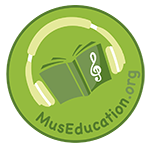History of music
Music from the Stone Age to Antiquity
This video traces the evolution of music from the Stone Age to Antiquity. It explores how Homo sapiens, also known as “knowing man,” initially used their voices for ritualistic and religious ceremonies. Advanced civilizations in Mesopotamia, India, Egypt, and China cultivated magical, religious, folk, and art music. In ancient Greece, music became a theoretical discipline, with philosophers like Pythagoras integrating mathematics and music. Ancient Rome was influenced by Greek art, incorporating music into various aspects of life.
Music in the Middle Ages
Explore the enchanting world of music in the Middle Ages. During this period, music was primarily transmitted orally, leaving behind limited written records. The first known notations were created by monks, with Guido Alvarezo pioneering musical styles in the 11th century.
Gregorian chant, a monophonic Latin church hymn, derived its name from Pope Gregory. Churches and monasteries stood as the epicenter of musical expression during this era. The term “minstrel” typically referred to performers who combined their songs with instrumental accompaniment. .
Music in the Renaissance
This video explores Renaissance music, a period of cultural rebirth. Originating from the French word for “rebirth,” it witnessed a resurgence of Greek and Roman art. The focus shifted from God to humanism, particularly in Italy, notably Florence. Sacred music took a backseat as advancements in art, science, and technology marked the transition from the Middle Ages to the modern era. Vocal polyphony thrived, complemented by instrumental music. Key forms included Mass, Madrigal, and Motet. Notable instruments like the lute and organ played pivotal roles.
Music in the Baroque
This video explores Baroque music, a period of absolute rule in Europe. Compositions were tailored for royal courts and churches. Notable developments include the basso continuo technique, where the bass line took precedence. Concerto forms, both grosso and solo, gained popularity. The era saw the birth of opera in Florence, shaping the works of Handel, Bach, Vivaldi, and Monteverdi.
Music of the Viennese Classical Period
This video delves into Viennese Classical music, a period where Weimar thrived in poetry with Goethe and Schiller, while Vienna became the musical epicenter. Unlike the Baroque, compositions were meticulously notated. Classical music is marked by simplicity, cheerfulness, and striking contrasts. Key figures include Haydn, Mozart, and Beethoven, each contributing significantly to symphony and opera. Beethoven’s nine symphonies remain iconic. Mozart’s operas, including “The Magic Flute,” are legendary.
Music of the Romantic Period
This video explores the Romantic period in music, characterized by a focus on emotions, nature, folk art, dreams, longing, and mortality. The bourgeoisie supersedes the aristocracy in cultural influence, hosting musical gatherings in their salons. Orchestras grow in size, emphasizing the role of timbre. Virtuosos like Paganini and Liszt captivate audiences. The Strauss family, known for waltzes and polkas, enjoys immense popularity in Vienna. Art songs, accompanied by piano, are a hallmark of this era, with Schubert, Schumann, and Brahms as prominent composers.
Music of the Modern Age
This video explores modern music of the 20th century, characterized by diverse styles and a focus on timber. Stravinsky, an exemplar of modernist composition, worked in various styles. Impressionism extends from Romanticism, emphasizing timber. Expressionism challenges harmonic norms, embracing dissonances for emotional expression. Schoenberg pioneered 12-tone music, while electronic music, represented by Hindemith and Stockhausen, relies on generators and computers.

